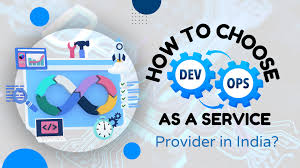Choosing the Right DevOps as a Service Provider
Selecting the appropriate DevOps as a Service provider is a critical decision that can significantly impact the success of an organization’s software development initiatives. With numerous providers in the market, it is essential to evaluate potential partners based on several key criteria. Firstly, organizations should assess the provider’s expertise and experience in delivering DevOps solutions. This includes evaluating their track record of successful implementations and their familiarity with industry-specific challenges.
Another important consideration is the range of services and tools offered by the provider. A comprehensive DaaS provider should offer a diverse set of tools that cater to various aspects of the DevOps lifecycle, including CI/CD, automated testing, and infrastructure management. Additionally, the provider should offer flexible and customizable solutions that can be tailored to meet the unique needs of the organization. This ensures that the DaaS solution can scale and adapt as the business evolves.
Furthermore, organizations should consider the level of support and training provided by the DaaS provider. Effective implementation of DevOps requires a strong partnership between the provider and the client, with ongoing support to address challenges and optimize processes. Providers that offer robust training programs and dedicated support teams can help organizations maximize the benefits of their DevOps investment. By carefully evaluating these factors, businesses can select a DaaS provider that aligns with their strategic objectives and enhances their software delivery capabilities https://dedicatted.com/what-we-do/devops/devops-as-a-service.
Common Tools and Technologies in DevOps as a Service
DevOps as a Service leverages a wide array of tools and technologies designed to streamline and automate various stages of the software development lifecycle. These tools play a crucial role in facilitating continuous integration, continuous delivery, and infrastructure management. A comprehensive understanding of these technologies is essential for organizations seeking to implement a successful DaaS strategy.
Some of the most commonly used tools in DaaS include:
· Continuous Integration/Continuous Deployment (CI/CD) Tools: Jenkins, GitLab CI, and CircleCI are popular choices for automating the build, test, and deployment processes. These tools enable teams to integrate code changes frequently and deploy them swiftly, reducing the time-to-market for new features.
· Infrastructure as Code (IaC) Tools: Tools like Terraform, Ansible, and Puppet allow organizations to manage and provision infrastructure through code. This approach ensures consistency and reproducibility across environments, reducing the risk of configuration drift and errors.
· Monitoring and Logging Tools: Solutions such as Prometheus, Grafana, and ELK Stack (Elasticsearch, Logstash, and Kibana) provide insights into application performance and system health. By monitoring key metrics and logs, teams can quickly identify and resolve issues, ensuring the reliability of software applications.
These tools, when integrated into a cohesive DaaS solution, empower organizations to achieve greater efficiency and reliability in their development processes. By automating repetitive tasks and providing real-time insights, DaaS tools enable teams to focus on innovation and continuous improvement.
Case Studies: Successful Implementations of DevOps as a Service
To illustrate the transformative potential of DevOps as a Service, consider the following case studies of organizations that have successfully implemented DaaS to enhance their software development capabilities.













